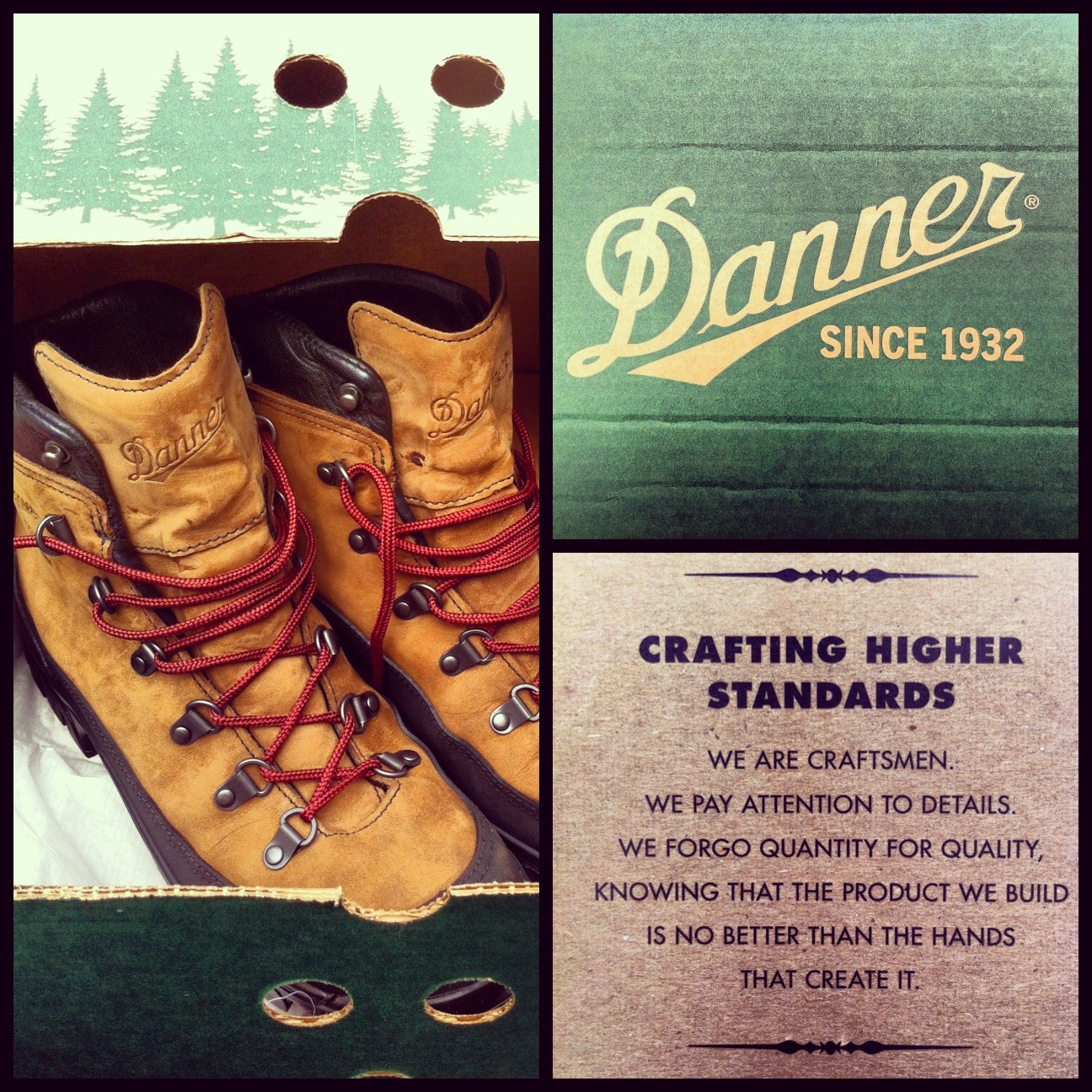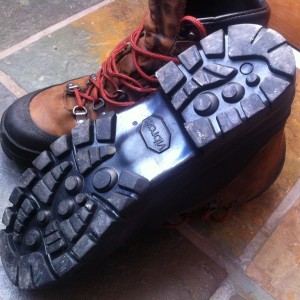Living in Utah, I have a lot of opportunity to go hiking and I often do. I have a 1-year-old puppy and the trails begin right behind my house, so there’s no excuse not to get outside. There are some amazing hikes right here in Park City, countless others along the Wasatch Range and even more in southern Utah, where the terrain changes from snow-covered conifer forest to dry, barren, beautiful slickrock.
It might come as a surprise, then, that I didn’t own hiking boots when I moved here, and it took me until last year to buy a pair. Those who know me, know that I rarely pass up even a semi-legitimate opportunity to acquire new gear. I wanted hiking boots, desperately; I just couldn’t find the right blend of performance, value, and design. Most of the boots at my target price of ~$250 received poor reviews on construction or fit, or were designed for “light” hiking with fabric uppers. Any that I liked were well above my price range, or made for heavy backpacking or mountaineering. I wanted something a bit traditional-looking, but not overtly classic in the new hipster trend. It seemed to me, at the time, that nobody made a midweight hiking boot that wasn’t either A) mostly synthetic, branded to the tits and covered in fancy exoskeletal overlays and decorative stitching or B) a “heritage” design that was either produced for nostalgic reasons in China (like the once-awesome Vasque Sundowner), or ridiculously expensive and very heavy – not what you want for daily walks in the woods, unless you’re an 80-year-old Swiss mountain man. My specific requirements were as such:
Leather upper – nothing wears like leather and nothing conforms better to your foot. My ancient Lowa hikers were proof of that. I wore them for a decade until the soles wore smooth and the glue finally gave out.
Vibram sole – many companies that used to use Vibram throughout the line (Asolo, Vasque, Scarpa) now only offer Vibram soles in their top-end mountaineering boots, with cheap Chinese thermoplastic in the value-priced models. Vibram soles are made to function, not just to look good, and most of the hiking soles in the Vibram line are replaceable by a competent cobbler.
Rubber rand – there’s nothing worse than scuffing and tearing the leather on your new boots. A wrap-around rand stops most of the damage, while leaving the breathable, flexible leather upper free to be its handsome self.
GORE-TEX – I hike in all types of weather, from sunny and dry to snowy, cold, and rainy. GORE-TEX keeps your feet dry, plain and simple.
Footbed-compatible last – many of the more traditional-looking hiking boots are made on a narrow last that should, in theory, support your arches and cradle your heel, but that doesn’t leave room for an insert. I worry that not only are they insufficient for serious hiking, but that they will lose shape after time, and once that happens you’re left with zero support and no way to fix it. I have worn Superfeet in all my shoes for over 5 years, and I generally won’t buy any footwear that can’t accept them.
Of course I also wanted them to be lighter in weight than mountaineering boots, but supportive enough that I could use them for backpacking if I decide to take a multi-day trip.
Kind of a tough list.
Then I saw the Danner Crater Rim GTX hiking boots.
At $300, the retail on the Crater Rims was just out of range for me, but they met all of my requirements and the reviews were all positive. They’re good-looking boots, as you can see, and the story of their creation makes for some seriously awesome reviews. You see, the design was originally made for the US Armed Forces in the mountainous areas of the Middle East, where traditional combat boots were too heavy and bulky. The original ICH (Improved Combat Hiking) boot is still available, but Danner knew a good thing when they saw it and decided to make a “civilian” version. As a result, the reviews mostly start with something like, “I wore this boot in the mountains of Afghanistan for three years straight, and it never once let me down…” which is good enough for me. I was able to cut a discount thanks to my industry connections, and I jumped on them immediately. Now that I’ve owned these boots for a while, I think I would pay the full $300 price if anything ever happened to them. They’re that good.
The fit out of the box is like no other hiking boots I’ve worn. I slipped a brand-new pair of Superfeet insoles into them and went for a four-mile hike up a trail by my house, then a longer hike the next day, with no negative effects. No hot spots, no blisters, no pinching, nothing. Wore them down south hiking slickrock, and in the Uintas on a couple of 8-10 mile loops with absolutely zero issues. The break-in period was practically nonexistent. Now after owning them for half a year, they are my go-to outside footwear, especially when there is snow on the ground. Paired with some high gaiters, they’ve hiked up to the top of Park City Mountain Resort in 3 feet of drifting powder, and they’ve logged dozens of miles on the lower elevation trails that wrap around Park City. They’ve hunted pheasants in Pennsylvania and had elk steak dinners in Wyoming. They look good, they do the job, and they clean up well.
Build quality on these USA-made boots is impeccable. The lining is a houndstooth synthetic with a light nap, not too cushy or warm, which is good for hot weather. The upper is full nubuck with a smooth-grain collar, and while I prefer full-grain leather, the nubuck is likely the reason they break in so fast. There is also a full, wraparound rubber rand on these boots, and it has kept them looking new through some serious abuse.
The outsole is a universal direction open tread Vibram sole. It is glued on, not stitched, and this might be a deal-breaker for some people. However, I know from experience that a good cobbler can replace a glued Vibram sole, even if Danner will not do it in-house themselves. I confirmed this fact at the latest Outdoor Retailer, where a good third of the staff was showcasing this exact boot in various stages of wear on their own feet.
The lacing system is probably my favorite thing about these boots. D-rings may seem simple, but in fact they’re pretty genius. Laced through from the inside out, they act as simple pulleys and allow easy loosening when you need to take your boots off, or in an area where your foot tends to swell. Lace them from the outside in, however, and they lock down on the lace with a camming action, creating a tight, precise fit that won’t slip as you tie the top knot. I love the locking function, and I’ll never think about D-rings the same way again because of it.
The only things I’ve done with my Crater Rim boots is to add Superfeet insoles (Merino Gray for the winter, standard Green for the summer) and, once the water-repellent finish began to show signs of soak-through, to treat them with Obenauf’s Leather Oil. Nubuck has a tendency to dry out and crack faster than smooth leathers, but it is also more flexible out of the box. The oil did darken that beautiful khaki color, but as you can see in the photo, the boots still look damn good and I get compliments on them all the time. Properly treated, I don’t think I’ll experience any cracking, as the oil prevents the nubuck from drying out.
On a side note, these boots have turned me into a huge fan of Danner. Everybody I’ve spoken with at the company has been nothing but gracious and enthusiastic about my purchase, acting as though I’m the first person to tell them about owning a pair of their boots. They advised me on sizing (dead-on US sizing, no need to go up at all to achieve a good hiking boot fit) and advised me on care, and they even told me the right guy to have resole them if it’s ever needed (Dave Page in Oregon), despite the fact that it will void the warranty. While I will buy Made in USA products whenever it’s logical or feasible, I am not a big stickler on it except for in certain products (bikes, skis, bourbon, and knives to name a few). Generally speaking, I believe in globalization. However, as a Red Wing, Chippewa, and now a Danner boot owner, boots have become one of those areas in which I won’t settle for anything less. I might go Italian at some point, but since that’s my ancestral home I don’t feel too bad about it.
If you’re seeking a mid-weight hiking, trekking, or upland/small game hunting boot, I can’t recommend the Crater Rims enough. They’re the best hiking boots I’ve ever worn, period. Are they pricey? Yes, unless you are in the outdoor industry and can get a discount, because Danner protects their pricing pretty well. I’ve seen them advertised as low as $250, and that in my mind is a bargain. Get a pair; you won’t be disappointed.




 GREGORY
GREGORY MOMENT SKIS
MOMENT SKIS TREW GEAR
TREW GEAR
1 comment
Hal Smith says:
Mar 27, 2015
I just recently acquired a pair of the (ICH) Combat Hikers new through my local surplus store at roughly a 75-percent discount; paying just $65. The boots are extremely well designed and constructed, and with a pair green Superfeet are quickly becoming my favorite everyday boot.
In the past I’ve worn Merrell, Vasque, Asolo and a few other hikers while working as a photojournalist in Kansas and Missouri, but non have been as comfortable as the Danner, especially with my extremely flat and chronically sore feet. I probably put close to 100-miles a week on my feet, and any shoe I wear has to be orthotically upgraded.